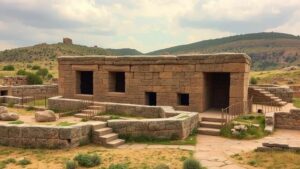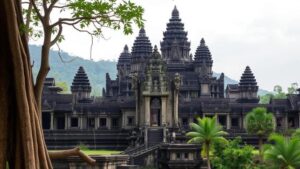Investigating the function of the “Ancient Japanese Dogū Figurines,” thought to have ceremonial or otherworldly significance.
Investigating the Function of Ancient Japanese Dogū Figurines
The Dogū figurines are a remarkable aspect of Japans ancient Jomon period, which is characterized by its hunter-gatherer societies and intricate pottery. These small humanoid figures, dating back to approximately 14,000 to 300 BC, have fascinated archaeologists, historians, and art enthusiasts alike due to their enigmatic forms and potential ceremonial significance. As artifacts from a time so distant, they raise essential questions about the beliefs and practices of early Japanese cultures.
Historical Context of Dogū
Originating from the Jomon period, the Dogū figurines were created between 14,000 and 300 BC, primarily found in various regions of Japan, particularly in the northern part of Honshu and some coastal areas. term Jomon refers to the cord-marked pottery that characterizes the era, which was recognized as Japans first settled culture. The figurines themselves are predominantly made of clay and exhibit a diversity of shapes and decorative styles, reflecting the artistic practices and environmental influences of the time.
Physical Characteristics of Dogū
The Dogū figurines vary in size, typically ranging from 10 to 30 centimeters in height. They are distinguished by exaggerated physical features, such as large eyes, elongated limbs, and distinctive patterns that often cover their surfaces. Notably, some Dogū have anatomical features that suggest an interpretation of health or fertility, which leads to the theory that they may have served a symbolic purpose in societal rituals.
- Large, expressive eyes often connected to theories of shamanistic beliefs.
- Curvilinear forms symbolizing vitality, reproduction, and femininity.
- Intricate patterns resembling clothing or tattoos that suggest cultural identity.
Theories Surrounding Function and Significance
While the exact function of Dogū remains unidentified, several prevailing theories explore their significance:
- Ceremonial Use: Many researchers posit that Dogū figurines were produced for religious or spiritual functions. The massive eyes signify an otherworldly gaze, perhaps symbolizing guardianship or spiritual connection.
- Fertility Symbols: Some interpretations link the exaggerated features of the figurines to fertility. The presence of certain Dogū at burial sites suggests that these figures could have played a part in funerary practices, potentially serving as offerings or protective symbols for the deceased.
- Artistic Expression: Dogūs versatility in form and decoration is also seen as artistic innovation. Each figurine could represent individual or tribal identities, reflecting the aesthetics and creative capabilities of the Jomon people.
Archaeological Discoveries and Significance
Significant archaeological discoveries over the years have illuminated the context and use of Dogū. For example, sites such as the Sannai-Maruyama site in Aomori Prefecture provide a wealth of data, including numerous Dogū finds within dwellings and burial grounds. These excavations suggest that the figurines were integrated into everyday life and possibly played roles in community practices.
A 2016 excavation revealed a remarkable clustering of Dogū around hearths, leading researchers to hypothesize that these figures may have been involved in rituals linked to fire or fertility, acting as conduits between the living community and spiritual realms.
Modern Perspectives and Cultural Impact
Today, the fascination with Dogū extends beyond archaeology into contemporary culture, inspiring artists, fashion designers, and filmmakers. are emblematic of Japans rich history and serve as a source of cultural pride. Museums across Japan, such as the National Museum of Japanese History, showcase these figurines, connecting modern society to its ancient roots.
Plus, Dogū’s otherworldly appearance has spurred speculations about their extraterrestrial connections in popular culture, prominent in science fiction. While these theories remain speculative, they contribute to the allure surrounding the figurines.
Actionable Takeaways
- Explore local museums or exhibitions that showcase Jomon period artifacts to gain a deeper understanding of Dogū figurines.
- Engage with literature on ancient Japanese culture and archaeology to appreciate the historical significance of these artifacts.
- Consider how ancient practices influence contemporary culture, looking at art, fashion, and media.
To wrap up, the Ancient Japanese Dogū figurines remain a profound enigma that continues to evoke curiosity and scholarly inquiry. r unique characteristics and potential functions offer insights into the spiritual beliefs and artistic expression of the Jomon people, serving as a bridge between past and present cultural practices in Japan.



